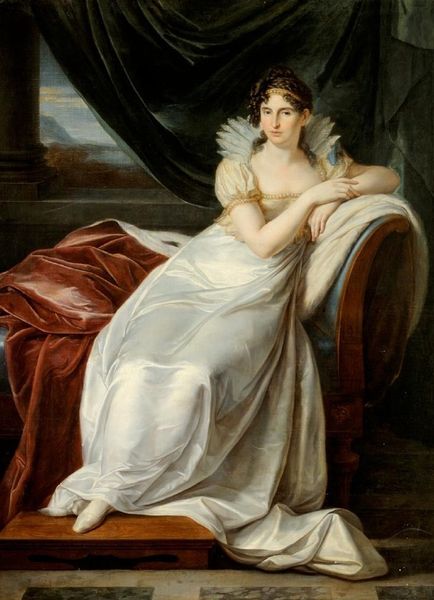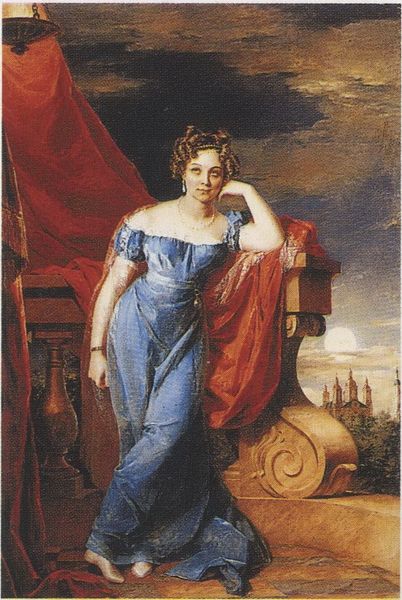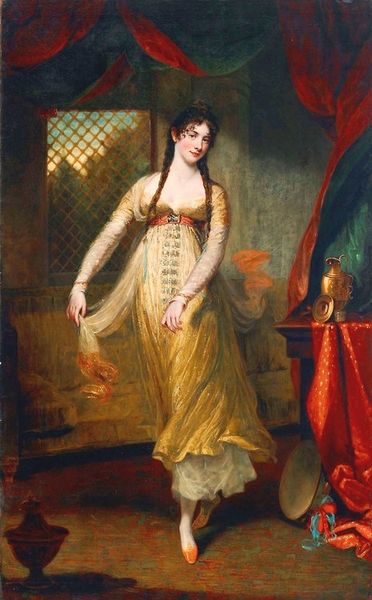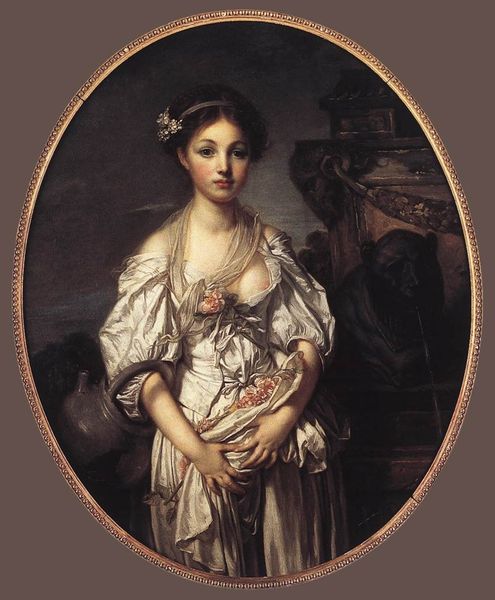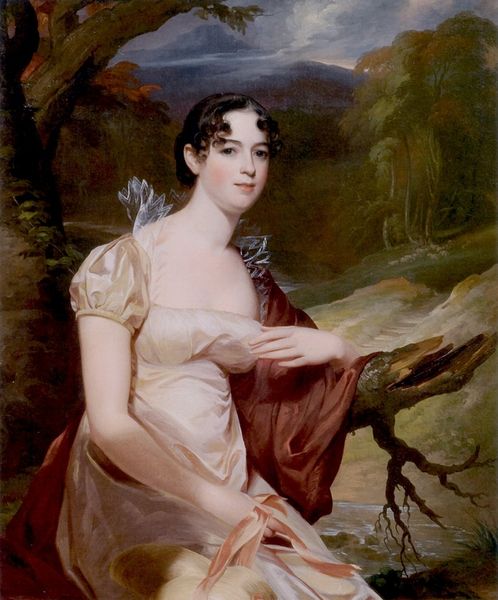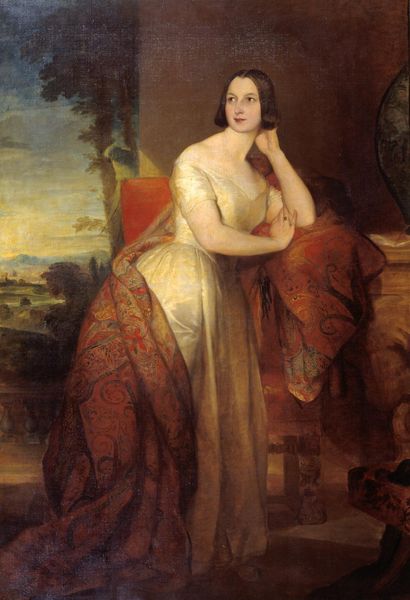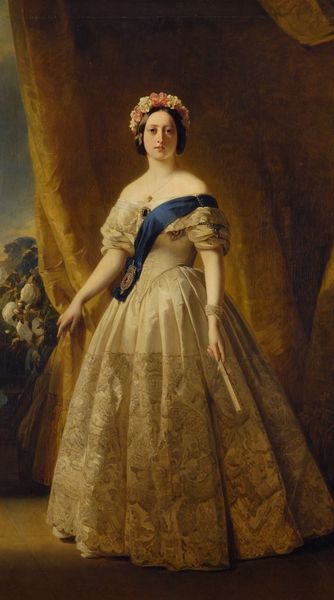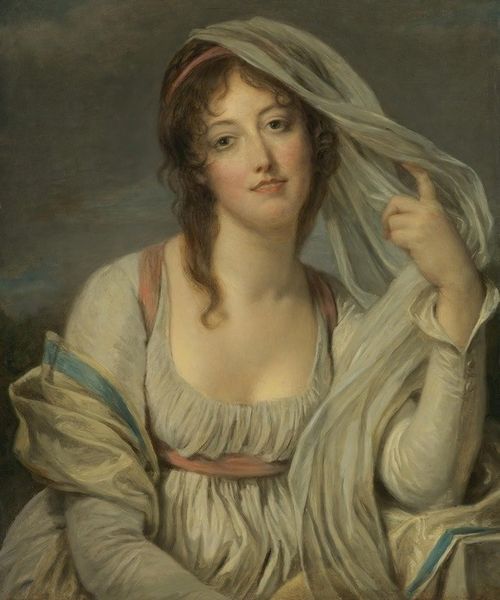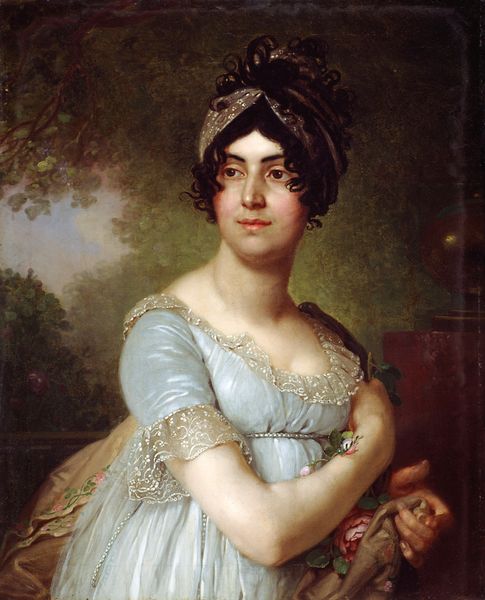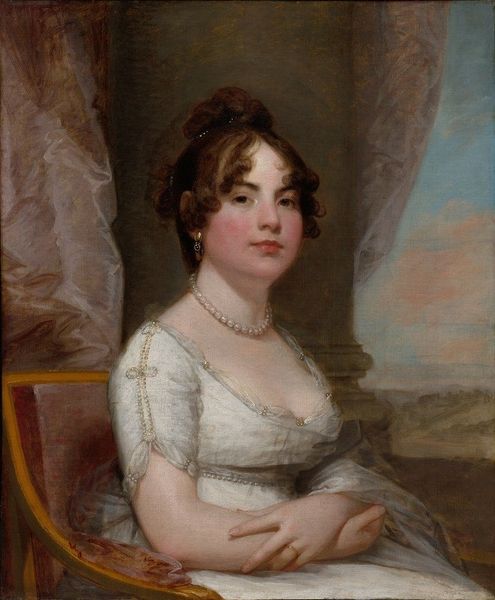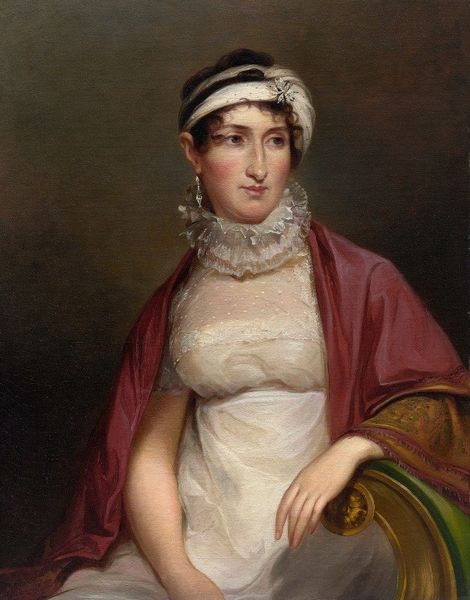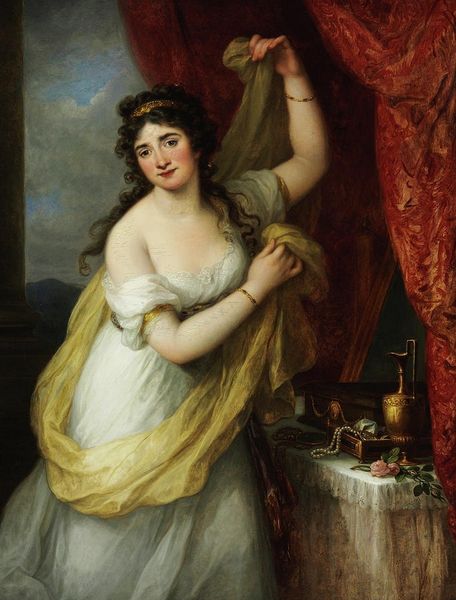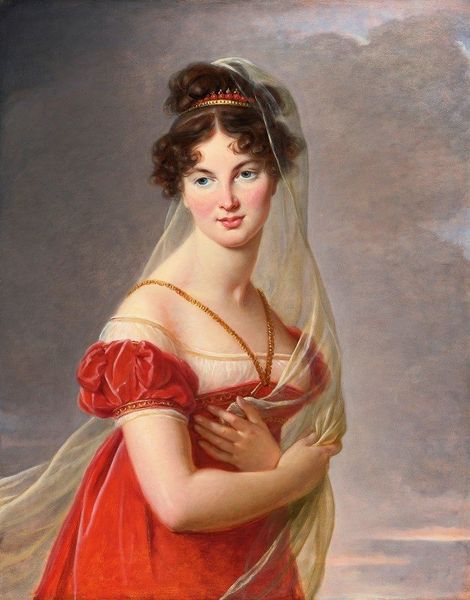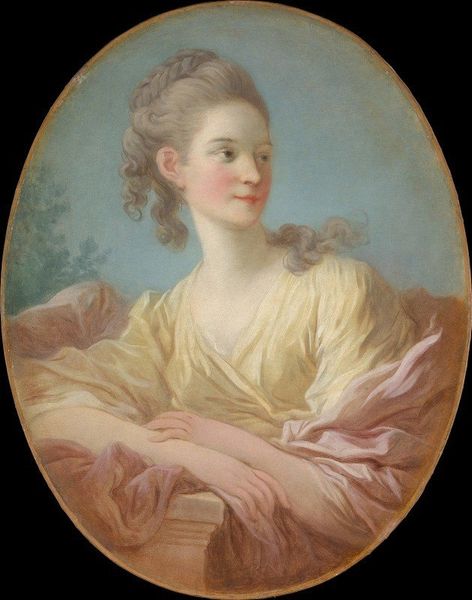
painting, oil-paint
#
portrait
#
figurative
#
neoclacissism
#
painting
#
oil-paint
#
oil painting
#
romanticism
#
history-painting
#
academic-art
#
portrait art
Copyright: Public Domain: Artvee
Editor: So, here we have François Gérard's "Portrait of Thérésia Cabarrus," painted in 1805. What strikes me is the way her white dress seems to glow. I wonder how Gérard achieved that effect with oil paint. What do you see in this piece? Curator: Well, first off, the dress itself—consider the social context. This isn't just any fabric. That lightweight, almost sheer material, the way it drapes... This speaks to a burgeoning textile industry, fueled by colonial trade and, unfortunately, enslaved labor. Editor: Enslaved labor and production? How does that connect with a portrait like this? Curator: Think about it. Thérésia, a prominent social figure, is literally draped in the fruits of a system built on exploitation. The luxury she embodies – even the apparent simplicity of her gown – is made possible by complex and often brutal supply chains. How do you think the process of making paints connects? Editor: That's... sobering. The ultramarine in the landscape could connect. The artist would depend on imported materials that needed complex international trade routes? It completely changes how I look at the painting. I mean, her status is not only about her appearance, it's based on her place in economy! Curator: Exactly! And it’s not just about luxury goods. Think about the production of canvases, the mining of pigments, the entire system of apprenticeship and artistic training – all of these are interconnected and reflect the social structures of the time. The system itself supported not only portraiture but trade networks that the painting implies without stating directly. Editor: That's fascinating. I hadn’t considered the artwork within that context. So much more to portraiture than just the depiction of a person. Curator: Precisely! By examining the materials and the means of production, we gain a much richer understanding of the artwork and the society that produced it. I learned something, too: We always have to remember the relationship between economics and society to see all the portrait conveys!
Comments
No comments
Be the first to comment and join the conversation on the ultimate creative platform.
